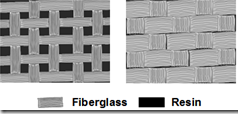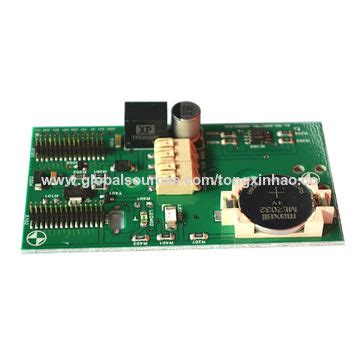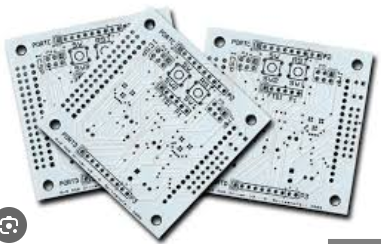Unlocking Innovation: The Future of Custom PCB Printing
Key Takeaways
In understanding the future of custom PCB printing, it’s crucial to recognize how pcb manufacturing has undergone significant transformation over recent years. By leveraging advancements in technology, pcb manufacturing companies have enhanced their capabilities, allowing for more diverse and innovative applications. The emergence of rapid prototyping has been a game-changer, providing businesses with the ability to test and iterate designs quickly and efficiently. This agility not only improves design outcomes but also leads to reduced pcb manufacturing costs, making it easier for even small startups to enter the market.
Additionally, tailored solutions have become more accessible across various industry applications. Whether you are developing medical devices, consumer electronics, or automotive systems, customizing your PCBs can significantly enhance your product’s functionality and aesthetic appeal. The emphasis on design flexibility empowers you to create unique products that meet specific requirements while maintaining high standards of quality.
Finally, as sustainability becomes a focal point for many industries, exploring eco-friendly practices in pcb manufacturing is no longer optional. Implementing greener processes not only helps in reducing waste but also positions your pcb manufacturing business as a responsible leader in the market. By embracing innovation at every step—from design to production—you are paving the way for successful and sustainable product development in an ever-evolving technological landscape.
The Evolution of Custom PCB Printing: A Historical Perspective
The journey of custom PCB printing has been marked by significant transformations, stemming from early rudimentary processes to sophisticated pcb manufacturing techniques that we witness today. Initially, the creation of printed circuit boards relied on manual methods, often leading to high pcb manufacturing costs and inconsistency in quality. As advancements in technology emerged, you began to see the advent of automated systems that drastically improved efficiency and accuracy in the pcb manufacturing business.
With the introduction of computer-aided design (CAD) software, the design phase was revolutionized. You could now create intricate layouts with precision where once there were limitations. Subsequently, pcb manufacturing companies embraced innovations such as laser etching and advanced inkjet printing technologies. These techniques not only reduced production times but also allowed for greater customization and flexibility in design—features that became increasingly essential as industries began to demand more innovative electronic solutions.
As you trace the evolution of custom PCB printing, it becomes clear how each advancement has contributed to reducing costs while enhancing quality. This had a cascading effect on industries reliant on electronic components, as they enjoyed faster turnaround periods and improved product development cycles. The historical perspective of custom PCB printing showcases a thriving ecosystem driven by continuous innovation, where adaptability remains key to staying ahead in a competitive market landscape.
| Time Period | Key Developments | Impact |
|---|---|---|
| 1960s | Manual PCB creation | High costs; low precision |
| 1980s | CAD software introduction | Improved accuracy; design flexibility |
| 1990s | Automated systems for production | Reduced costs; increased efficiency |
| 2000s – Present | Adoption of laser etching & advanced inkjet techniques | Enhanced customization; rapid prototyping |
This historical overview highlights how essential advancements have paved the way for modern practices in custom PCB printing—shaping today’s landscape towards innovation and quality assurance.
Emerging Technologies in PCB Manufacturing
In the realm of pcb manufacturing, emerging technologies are playing a pivotal role in driving innovation and enhancing efficiency. One of the most significant advancements is the integration of additive manufacturing techniques, which allow for more intricate designs and configurations that were previously impossible. These methods reduce material waste, ultimately leading to a more sustainable approach within the industry. As you consider your options, it’s essential to understand that these innovations are not merely a trend—they represent a fundamental shift in how pcb manufacturing companies operate.
With the rise of smart manufacturing and automation, companies can streamline their processes, significantly reducing pcb manufacturing costs while improving product consistency and quality. This ensures that you can obtain tailored solutions without sacrificing speed or reliability. When partnering with reliable pcb manufacturing businesses, ensure they utilize these advanced technologies to remain competitive in a rapidly evolving market.
“Adopting emerging technologies not only enhances production capabilities but also drives innovation across industry applications.”
By engaging with companies that prioritize technological advancement, you position your projects for success, enabling you to harness greater design flexibility and maintain a strong foothold in your sector. Embracing these advancements helps accelerate time-to-market, allowing you to deliver products swiftly and efficiently in today’s demanding landscape.
The Importance of Rapid Prototyping in Design
In today’s fast-paced technological landscape, the importance of rapid prototyping in pcb manufacturing cannot be overstated. This process enables you to quickly create and test prototypes, facilitating quicker iterations and reducing the time from concept to final product. By leveraging advanced techniques in pcb manufacturing, you can efficiently address design challenges, thereby enhancing your ability to innovate. When you collaborate with reputable pcb manufacturing companies, you gain access to state-of-the-art tools and resources that streamline the prototyping phase. This agility allows you to respond more effectively to market demands and ensures that your products remain competitive. Furthermore, optimizing for pcb manufacturing cost becomes more achievable when rapid prototyping is integrated into your workflow, as it minimizes waste and expedites the testing cycle. Thus, adopting rapid prototyping approaches not only enhances design innovation but also solidifies your position in the ever-evolving pcb manufacturing business landscape.
Cost Efficiency: Balancing Quality and Affordability
In today’s competitive market, achieving cost efficiency in pcb manufacturing is essential for businesses looking to innovate while keeping budgets in check. You may find that numerous pcb manufacturing companies are now leveraging advanced technologies and streamlined processes to reduce pcb manufacturing costs without compromising on quality. By employing methods such as automated production lines and optimizing material usage, these companies are able to deliver high-quality products that meet stringent demands. As a business owner, emphasizing the balance between affordability and quality is crucial; it ensures that your offerings remain attractive to clients while sustaining profit margins. Additionally, understanding the intricate details of the pcb manufacturing business can unveil new strategies for cost savings. The global push towards efficiency has led to a growing trend among manufacturers to adopt sustainable practices, further enhancing their value proposition by lowering waste and energy consumption. Therefore, as you navigate the landscape of custom PCB printing, recognizing the importance of economic viability alongside exceptional standards can set the stage for lasting success in your projects.
Tailored Solutions for Diverse Industry Applications
In today’s dynamic landscape of custom PCB printing, it is essential for pcb manufacturing companies to offer tailored solutions that cater to a variety of industry needs. The increasing complexity of electronics across sectors such as automotive, healthcare, and consumer electronics mandates a shift towards specialized designs that optimize performance and functionality. By focusing on customization, pcb manufacturing can enhance user experience and product reliability while accommodating specific regulatory requirements. The pcb manufacturing cost plays a critical role here; however, innovative techniques such as additive manufacturing or advanced materials can lead to efficient production without compromising on quality. With the benefit of rapid prototyping, these pcb manufacturing businesses can quickly adapt designs based on user feedback or changing market demands, ensuring that your products are not just functional but also innovative. As you delve into the world of custom PCB solutions, you will find that this adaptability is key in driving growth and maintaining competitiveness in the ever-evolving electronic market.
Enhancing Design Flexibility through Customization
In the current landscape of pcb manufacturing, the ability to enhance design flexibility through customization is paramount. You find that many pcb manufacturing companies are now adopting advanced technologies that allow for more tailored solutions, accommodating specific needs of various industries. This shift is crucial, as it enables you to create highly specialized products that meet unique application requirements. By leveraging innovative techniques such as additive manufacturing and subtractive processes, pcb manufacturing cost can also be optimized, making small production runs more feasible and economically viable. Through effective customization, you can experiment with different layouts, materials, and sizes without the constraints often found in traditional mass production methods. Ultimately, this expansion in design capability empowers you to bring more inventive ideas to fruition, elevating the overall potential of your pcb manufacturing business. Moreover, as you push the boundaries of what is possible in custom PCBs, you contribute to a dynamic development cycle that benefits not only your projects but also enhances competitiveness across various sectors. This exploration into custom PCB designs not only reflects innovation but also aligns with market demands for quicker turnaround times and product diversity.
Sustainability Practices in PCB Production
In the realm of pcb manufacturing, sustainability is becoming more critical than ever as companies strive to minimize their environmental footprint. Implementing effective sustainability practices in pcb manufacturing not only benefits the planet but can also lead to significant advantages in operational efficiency and cost savings. You might find that pcb manufacturing companies are increasingly adopting eco-friendly materials, opting for water-soluble solder, and using recycled substrates to create printed circuit boards that align with green initiatives. Moreover, many manufacturers are optimizing their production processes to reduce waste and energy consumption, which contributes directly to lower pcb manufacturing costs. By harnessing advanced techniques such as additive manufacturing and virtual prototyping, as well as promoting a circular economy, you can see how companies are setting a new standard for sustainable practices in the pcb manufacturing business. This commitment not only meets growing consumer demand for environmentally responsible products but also positions these companies as leaders in an evolving market driven by innovation and ethics.
Innovation’s Impact on Time-to-Market Strategies
In today’s fast-paced technological landscape, the ability to enhance your time-to-market strategies is crucial for staying competitive. The evolution of custom PCB printing plays an instrumental role in this regard, enabling pcb manufacturing companies to streamline their processes significantly. By leveraging rapid prototyping, you can dramatically reduce development cycles, allowing for quicker iterations of designs. This not only decreases the overall pcb manufacturing cost but also facilitates early detection of potential design flaws, minimizing expensive adjustments later in production. With tailored solutions that align closely with specific industry needs, you gain the flexibility to adapt swiftly to market demands and customer preferences. Moreover, embracing innovative technologies within your pcb manufacturing business safeguards against obsolescence and ensures that your products are designed for the future. By focusing on enhancing design flexibility through customization, you unlock new avenues for innovation while positioning yourself at the forefront of the electronic design revolution.
Conclusion
As we look ahead, the landscape of custom PCB printing continues to evolve, driven by unprecedented advancements in pcb manufacturing technologies. You may find that pcb manufacturing companies are increasingly adopting innovative techniques that not only enhance quality but also improve efficiency and reduce costs. The ability to produce customized solutions tailored to specific industry needs plays a critical role in product development cycles. By integrating rapid prototyping into your processes, you can significantly shorten the development timeline while maintaining pcb manufacturing cost effectiveness. Embracing these cutting-edge methodologies allows your pcb manufacturing business to respond promptly to market demands and adapt designs with greater flexibility. Furthermore, focusing on sustainable practices not only benefits the environment but also enhances your company’s reputation in the ever-competitive market. The future of custom PCB printing holds remarkable potential for those ready to innovate and invest in these transformative technologies.
FAQs
In order to navigate the complex landscape of custom PCB printing, it’s essential to address some frequently asked questions that arise about PCB manufacturing. Many individuals and businesses are curious about the PCB manufacturing cost. Generally, the cost can fluctuate greatly based on factors such as material selection, complexity of the design, and volume of production. When choosing from various PCB manufacturing companies, it’s advisable to consider both quality and affordability to ensure that you’re receiving value for your investment. Additionally, those interested in starting a PCB manufacturing business often ask about the necessary certifications and regulations, which can vary from region to region. Knowledge of local industry requirements not only aids in compliance but also enhances your credibility with potential clients. It’s important for you to weigh options closely and think about how advancements in technology can impact your business model. With innovative techniques continually reshaping how PCBs are produced, making informed decisions regarding design and manufacturing processes can significantly enhance your competitive edge in this ever-evolving market.







